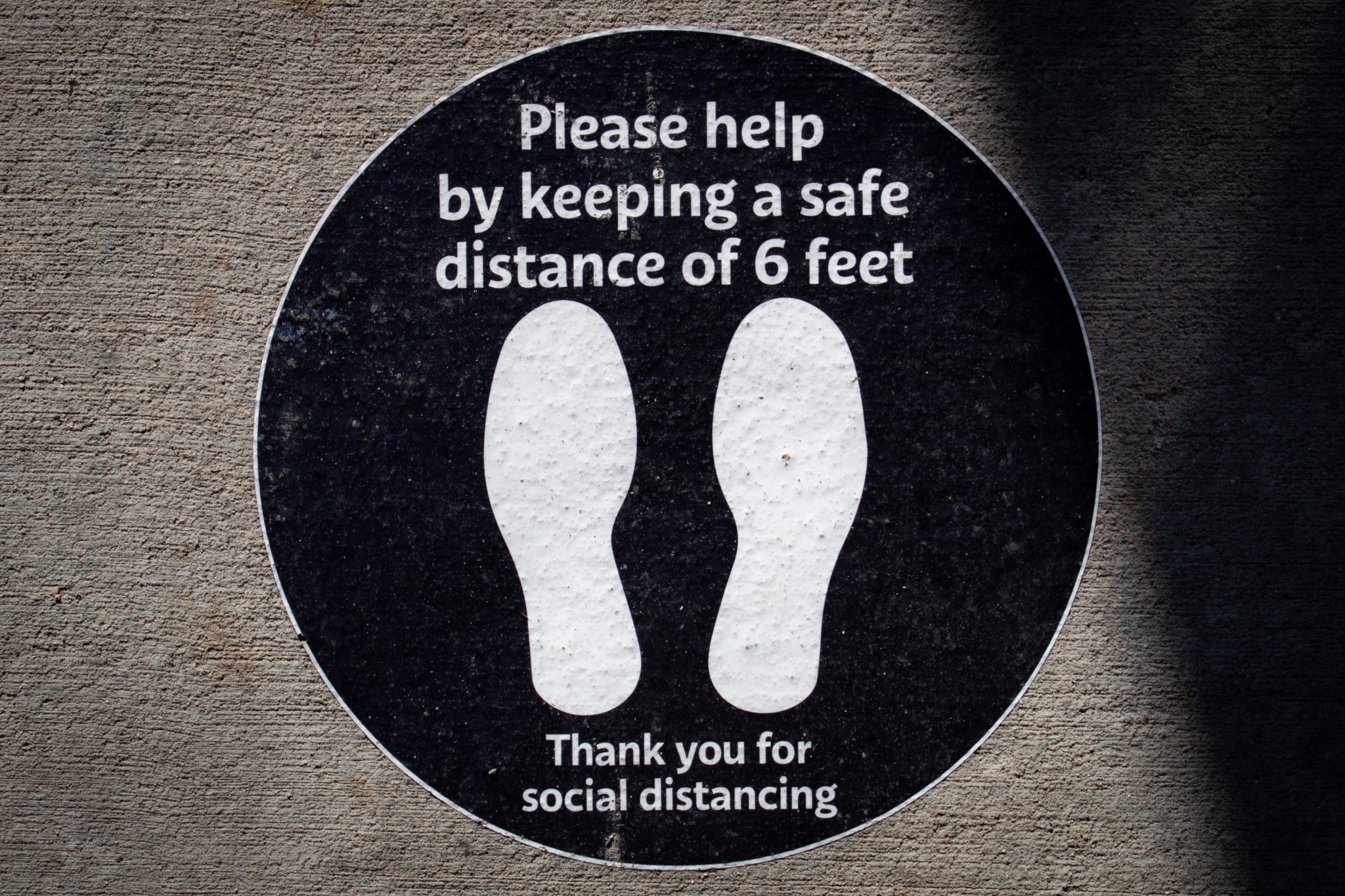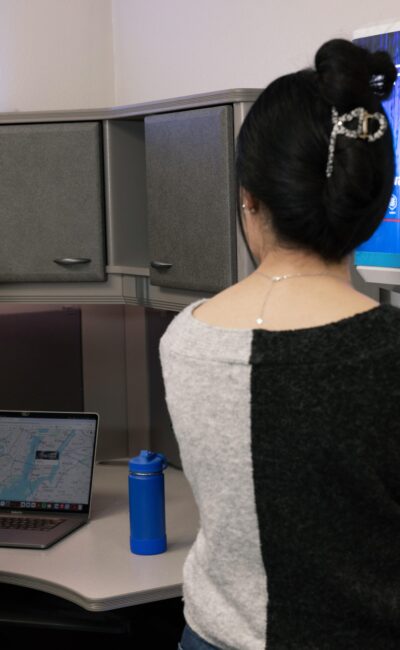Every company, big or small, requires meetings. While many companies have adjusted to remote conferencing, there are still some that require in-person gatherings or have adjusted to working with a smaller in-person staff at the office. When this happens, businesses must implement social distancing to preserve safety for all during the COVID 19 situation.
Sitting in close proximity around a boardroom table in a closed room is no longer an option during these COVID 19 pandemic times. As with any other part of business operations, executives have learned how to adapt to the necessary changes to run the company as efficiently and effectively as possible and also, keep employees safe at the same time.
When starting to reopen your physical office and welcome back employees into the space, here are a few things to keep in mind as you coordinate physical arrangements for a meeting and put other health and safety guidelines into effect.
Limit Physical Attendance
When deciding how you want to reconfigure physical arrangements for a meeting, choose a meeting room or open area where there can be plenty of space between individuals and limit the number of people who attend in-person. Allow other members of the team to call in as needed, while keeping the main people physically present to a minimum.
Additionally, limit meeting frequency and length. Stick to a straightforward agenda and use email or phone calls as a follow up for any questions that may arise beyond the scope of what’s discussed.
Reconfigure Space and Minimize Contact
Install physical barriers, such as transparent shields, as needed in open office floor space. Remove the number of chairs in the office to promote proper safe distancing measures, and maintain a shared calendar to accomodate for scheduled meetings only. This allows you to keep track of individuals who meet together in case someone tests positive for coronavirus. It also allows for ample time between sessions to sanitize the room.
Use floor markings and other visual cues throughout the office and into the hallway, stairway, and elevators to indicate six feet apart. These may include one-way routes or assigning specific doors for entrance or exit only to limit close physical interactions. Another way to minimize in-person contact is to encourage employees to eat at their desks and limit congregating in shared breakrooms.
Take Meetings Outdoors
Optimize physical arrangements for a meeting by taking the conversation outdoors. Depending on where your office is located and the accessibility to heaters in the winter and fans and shade in the summer, take advantage of any outdoor spaces that can be used for meetings.
Assess nearby patios, parks, and even sectioned off parts of the parking lot to have more meetings outdoors while sitting at least six feet apart from each other. This can work especially well for smaller one-on-one meetings or team huddles that call for fewer people at a time.
Extend Remote Working and Schedule Staggered Shifts
Many companies have decided to implement remote working for the remainder of the year and into 2021. This ensures social distancing measures and updated safety protocols are in place once the time does come for employees to return to the office.
When possible, give employees the opportunity to work remotely and handle meetings through teleconferencing and electronic means. However, if the work largely requires in-person operations, stagger employee shifts to limit the number of people in the office at any given time.
Go Virtual for Larger Gatherings
One of the easiest ways to implement social distancing is to go virtual. When company meetings require everyone’s attendance at the same time, switch to a virtual meeting setup which allows company leaders to still speak directly to employees about the state of the company, changes, and wins for the quarter.
Since larger meetings are largely presentation-based, hosting it virtually maintains a similar feel as an in-person experience. Open the meeting for questions at the end by assigning someone to monitor the chat feature through your video conferencing program and mute and unmute participants one by one.
Make Sure Employees Have Work Equipment at Home
As businesses are updating physical arrangements for a meeting and considering the benefits of remote working during the pandemic and in its aftermath, make sure everyone is assigned their own personal equipment to perform the job at home. Create a policy that labels and tracks items “checked out” of the office.
Due to the differences in space and schedule restrictions at home, maintain flexibility for meeting attendance and record meetings for those who can’t participate at the designated time.
Eliminate or Reduce Business Travel
Postpone or temporarily eliminate business travel for meetings, training, and conferences. Schedule them virtually instead or reschedule for a later date. For those in the company that must travel for business, have them work from home for two weeks symptoms-free before returning to the office.
To further implement social distancing, encourage employees to walk, bike, or drive to work rather than take public transportation. If they rely heavily on a train or bus to get to the office, set a different start and stop time to avoid contact with others who may be traveling by public transportation as well.
Rethink Food and Beverage Options
Social distancing and sanitization protocols go hand-in-hand when it comes to meetings. For example, food and beverages are typically a part of meetings, especially those that run early in the morning or through the lunch hour. Alter what’s offered to help reduce the spread of germs. Offer single serving snacks rather than communal items meant for sharing, such as a box of donuts. Eliminate corporate catering unless it’s brought in and reserved for a small group.
Replace high-touch items like water pitchers with a touchless water station to keep employees hydrated. FloWater’s one-touch technology and new foot pedal option limits contact and spread of germs. Plus, it’s quick fill capabilities prohibit a line from forming even when meeting the needs of a larger capacity. Making these kinds of adjustments allow business to proceed as usual but with contactless options in play.
Make Masks and Hand Sanitizer Readily Available
Ensure cleaning and sanitizing supplies are regularly stocked throughout the office. These include soap, paper towels, tissues, hand sanitizer, masks, and gloves. While some commercial office buildings may have resumed nightly office cleaning services, empower your staff to regularly wipe down and sanitize meeting rooms and other communal spaces with disinfecting wipes.
Once visitors and clients are allowed back into the space, make masks available to all when six feet of distance can’t be easily maintained. Discourage handshakes or any other physical contact when greeting meeting attendees. Communicate your visitor policy clearly by having signage available at the front door.
Use the Same Online Meeting Tools Across the Board
Along with social distancing and sanitization best practices for meetings, you’ll want your employees to feel well-informed and supported as changes occur. With so many online meeting tools available, people tend to favor one over the other. Decide among your executive team which tool(s) will be used company-wide to create consistency among staff and when communicating with clients and customers.
Ensure everyone has had proper training in online meeting protocol and what’s expected, especially for those who may never have participated in a phone or video meeting. Streamlining the process will help employees adapt better and limit the amount of miscommunication or missed meetings even if part of your staff is working from home.
Support Employees Mental Health
While your office may be ready to welcome back employees, employees may be uncertain about returning to work while still in the pandemic. Support the mental health of your employees who are facing a range of issues related to the challenges that the coronavirus has brought upon households.
Speak together as a team about concerns to be transparent across the board with regards to sick leave policies and plans for reopening. Ask managers to conduct one-on-one meetings with their team members to check in on how they’re doing at home, what they need in terms of support for their work, and how to come up with solutions for meetings and other business operations that everyone can feel comfortable with following.
Take Precaution When Reopening Offices
Part of what will help keep companies safe is having a company-wide safety protocol in place to limit the spread of COVID-19. The first step is to direct employees to stay at home if a person is experiencing symptoms at all. They should quarantine until they’ve met the standards for returning to work. However, since a person can be asymptomatic and still spread COVID-19, daily temperature screenings prior to entering the workplace is another step to ensure the well-being of others.
As businesses start to bring back employees placed on furlough or restart operations at a greater capacity than before, it’s essential for building managers and company executives to have a solid plan in place with contingencies for projected changes. This includes, but isn’t limited to, physical arrangements for a meeting at different employee capacity rates, a daily cleaning and sanitizing strategies, creative ways to implement social distancing, and self-isolation policies if someone is exposed to the virus.
Although everyone is eager to return to collaborating with their colleagues in-person, it’s important for everyone to have a sense of precaution to make sure businesses can safely and consistently move forward.
Source:
https://www.cdc.gov/coronavirus/2019-ncov/community/office-buildings.html




